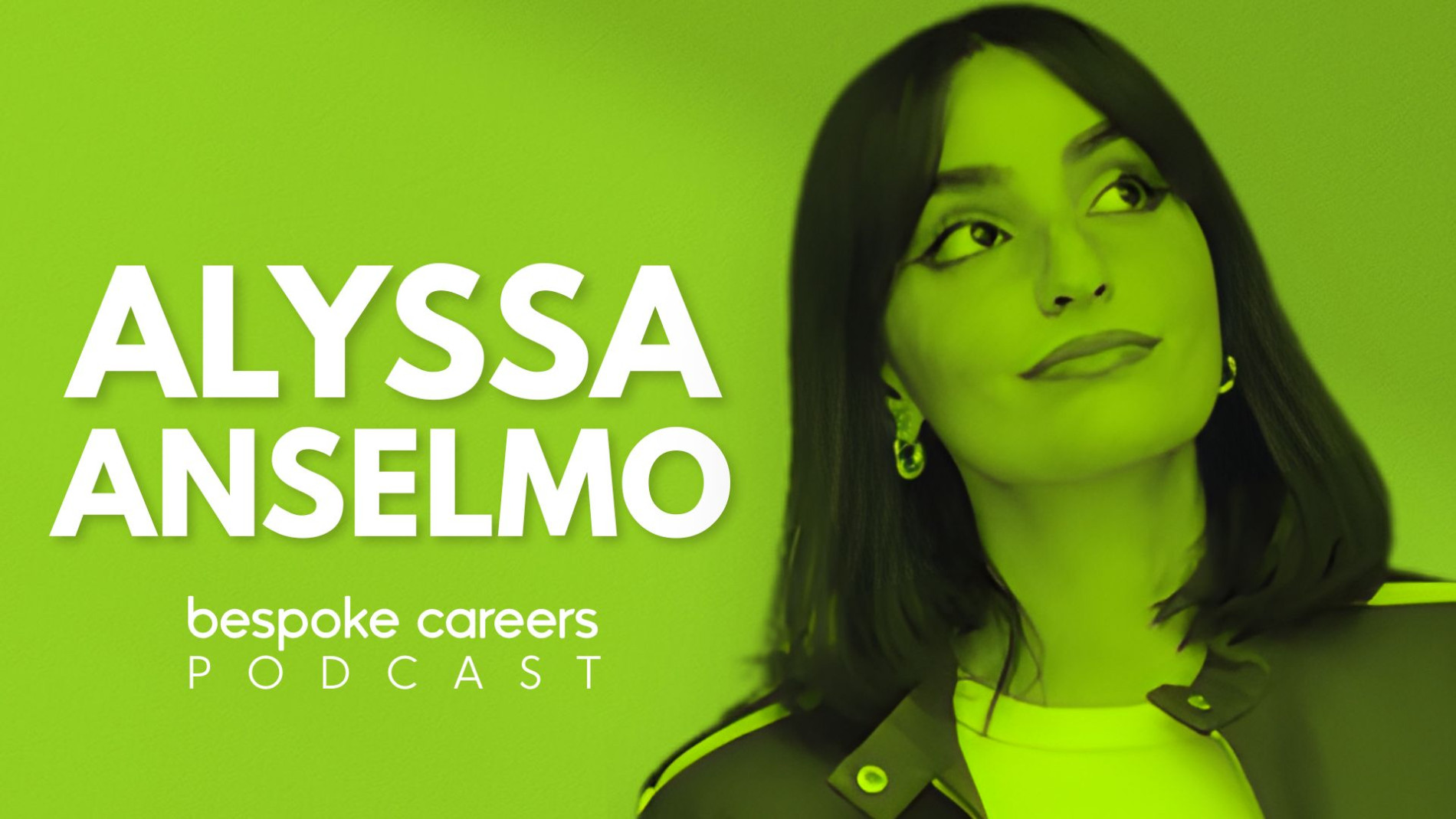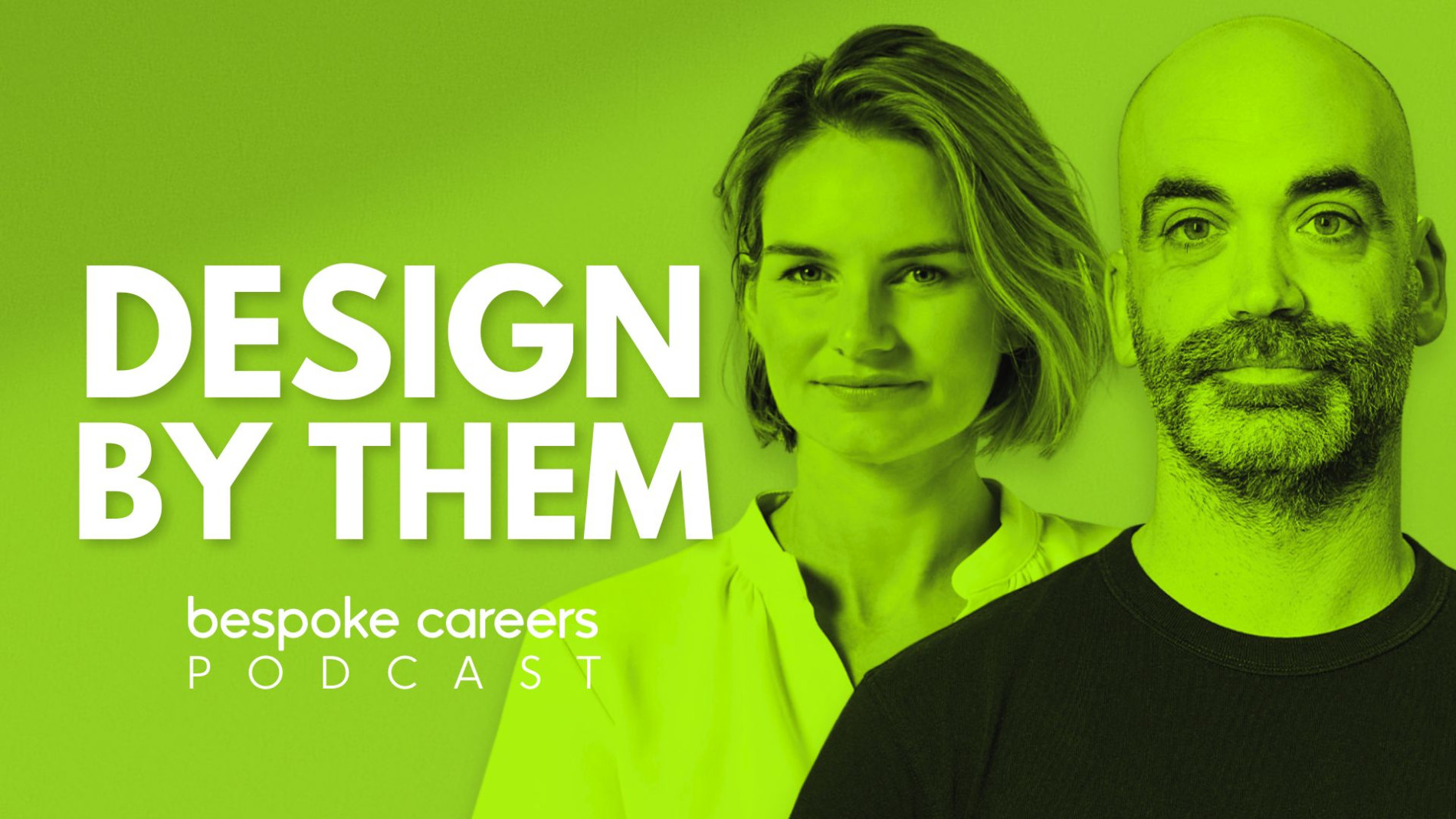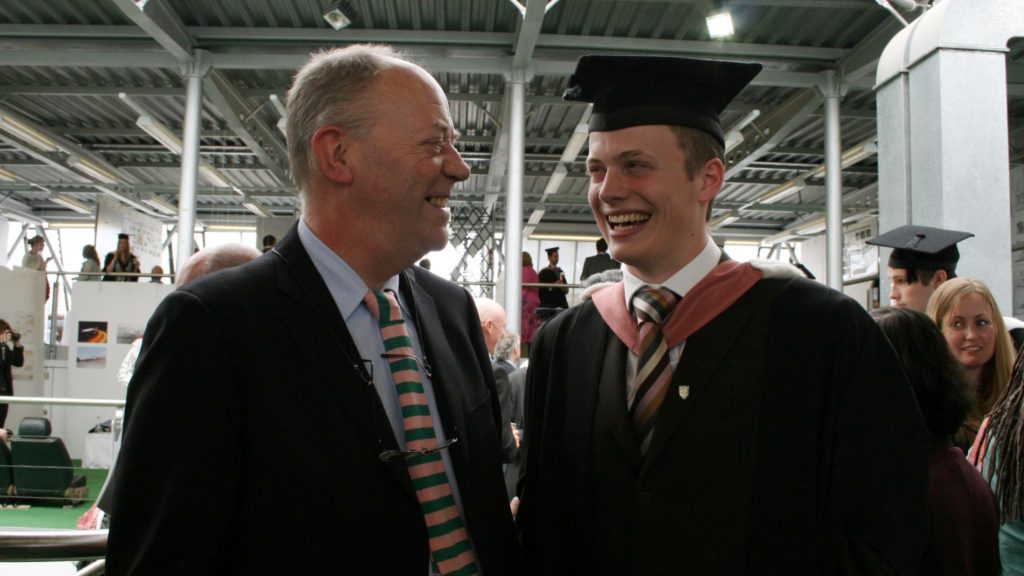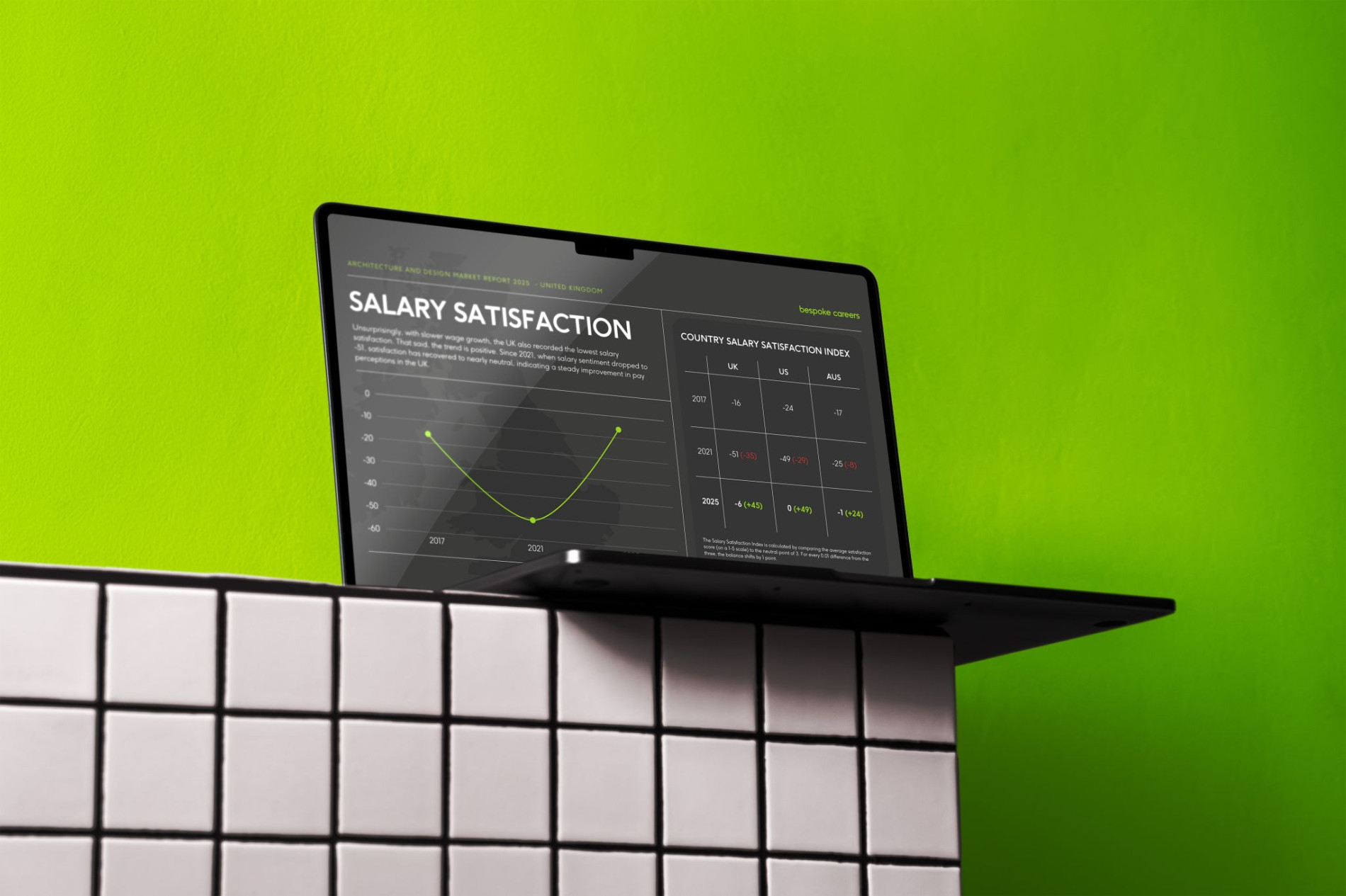
Keir Regan-Alexander on the future of architecture, AI, and finding your niche
We sit down with Keir-Regan Alexander, founder of Arka Works, to explore how AI is transforming architecture.
With over 15 years of design experience in top London practices, Keir shares his journey from architect to AI consultant, revealing how AI is changing the way architects work.
We cover everything from early career influences and design school experiences at Liverpool and Westminster to the pressures of running a practice and the challenges of embracing new tech.
Why architecture?
You can’t switch it off, can you? Once you have the architecture brain. Walking into this room I was registering all of the finishes, all of the furniture, the various things. The same with the building. I was noticing the atrium detailing and the ring beam. I think as soon as I got an eye for it, it became a bit of an obsession.
On early influences…
I remember being taken to cultural places by my dad, like galleries or theatres, and feeling different in those sorts of buildings. I didn’t really think it was for me. I was into music and art and then I did quite well at science at school. My dad, who’s a doctor, said you should be a doctor. But I wasn’t very good at chemistry and I don’t think my heart was in it.
I remember my sister saying in the car one day she wanted to be an architect. I didn’t really know what it was. Then she said, you know, like Tom Selleck in Three Men and a Baby. And I was like, oh yeah, that does seem like a cool job.
Then my career adviser said something similar. They were looking at what I was good at. I was very into graphic design. Then I got into engineering, took a gap year, and finally landed on architecture.
On Liverpool vs Westminster…
At Liverpool, it very much looked and felt like I thought an architecture education should – studio culture, drawing boards, making models, fantastic friends.
Westminster, on the other hand, was way more avant-garde. The studios had very different remits. You could be postmodern for a year, then parametric the next.
I think I got a good balance. I’m quite glad I got a mix.
On joining AHMM…

The Yellow Building atrium space. Photo by Tim Soar.
It was a baptism of fire. I went in as a Part 1 and I was definitely the youngest in the whole practice. I think there were only two Part 1s that year. I’m still friends with James, who was the other one.
At AHMM, it was a time of huge growth. When I joined, there were about 75 people. Not long after, it jumped to 100. It felt incredibly exciting. They put me on this amazing office project – the Yellow Building on Latimer Road, which was Monsoon Accessorize’s headquarters. The building was topping out when I joined, and I basically got to work on it on site. I was thrown straight into it – packages, subcontractor information, the nitty-gritty detail. It was brilliant.
What really stuck with me from AHMM is how well-run the place was. It was a proper design machine. At the time – and I think it’s still true – they had a system for everything. They were obsessed with not just doing something well once, but making sure it could be done well again.
What I took from that time was a deep understanding of how good systems make practice better. That mindset – of always asking how to improve, how to refine – has stayed with me. It’s a big part of what I do now: helping practices think like engines. How do you keep them running well? How do you tweak things so they run better?
On Fielden Fowles…
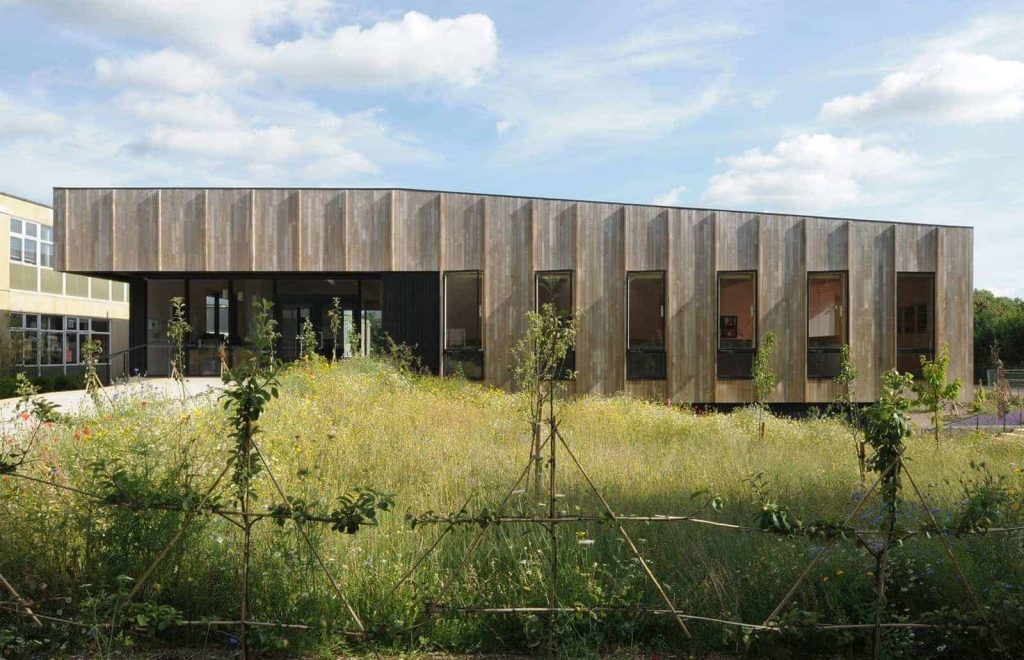
The Lee Centre – a cross-laminated timber hub for science learning at Ralph Allen School, blending natural materials with a flexible, university-style layout.
A friend was working there and I was really excited by what they were doing. It was early days. The studio was in this freezing cold warehouse in Hackney. Fergus Feilden let me come in and help out with a few things, and then they hired me as a Part 2.
At that time, there wasn’t a single Part 3 in the whole practice. We were all Part 2s. It was such a young studio. Their attitude was just: get on with it, we’ll figure it out. Which obviously came with risk and a fair amount of stress. It was hard work.
But being in a small practice, you end up doing everything. You become essential pretty quickly. I was given projects that were well beyond my experience level – and thankfully, I managed to deliver them well.
I did my Part 3 while I was there. What really stuck with me was the mindset: just get on with it, make it happen. The work was always high quality, and it still is. I always joke that the best thing that happened to Fielden Fowles was me leaving – they’ve only gone from strength to strength since. Fabulous practice.
On Morris+Company…
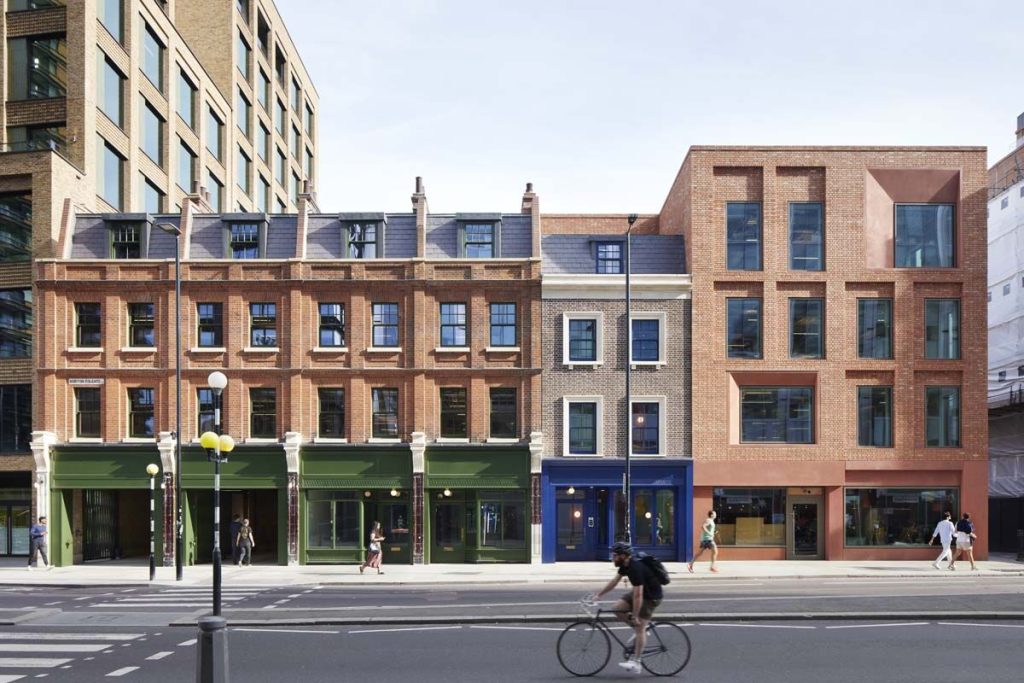
Heritage-led transformation and contemporary extension within the Norton Folgate masterplan – a decade in the making.
Morris+Company was a great experience. The interesting thing is that Joe came from AHMM too, and at the time Morris+Co was still quite a young practice. It almost felt like a blend of AHMM and Fielden Fowles in terms of culture and ways of working.
I’d gone from big, to small, then to something in the middle. I joined as employee number 20, and by the time I left ten years later, the practice had grown to around 50 or 60 people. That growth period was exciting.
Joe and I worked well together from the start, probably because of that shared AHMM background. I recognised the filing system on day one. We were still using MicroStation, which was a dream, and there were plenty of familiar faces on the team. It just felt familiar.
At that point, the studio had done a lot of beautiful private houses and smaller projects, and they were starting to be noticed by bigger clients – PLCs and institutions. That meant a shift towards more complex projects, commercial risk, and scale. That’s where I came in. I ended up working on a lot of the larger jobs. One of them was actually only completed last year – nearly ten years in the making. That’s architecture.
If I were giving advice to younger architects, I’d say it’s important to experience different types of practice. They all have distinct cultures. I wanted to be part of something fast-moving, and that’s what drew me to Morris+Company. I’d seen their Ortus building in Denmark Hill and knew I wanted to be part of what they were doing. It felt like they were about to take off – and they did.
They’ve managed to balance commercial growth with design integrity, which not many practices pull off. Obviously, they went through a difficult period with the breakup, but they’ve continued to evolve.
On the break up…
It was a really stressful time. A difficult period for everyone involved – Joe, Mary, and the rest of us. I was a co-director then, along with David, Miranda, and Charlotte. We were all tasked with helping steer the practice through it.
It was disruptive, for obvious reasons. There were a lot of tough meetings. But we got through it. Everyone did. Things like that happen in practice – it’s not always smooth sailing. You just have to keep asking, what’s next? and keep going.
Mary went on to set up her own practice and has done brilliant work. We’re all still in touch. And looking back, it makes sense that the practices went in different directions. You can see the different visions in the work that came after.
From our side, that was the start of Morris+Company. I was heavily involved in shaping that, along with the others. It was a chance to reposition the studio – to clarify what kind of work we wanted to do, and how we wanted to do it.
On the name ‘Morris+Company’…
That name came quite late in the process. We had a long list of other options – some of them I’m very glad we didn’t go with. For a few weeks we were even called something else. I won’t say what.
We were trying to avoid a ‘name-name’ studio. But then Miranda said, “Hang on – there’s a reason Duggan Morris had cachet. People come to us because of Joe.” And she was right.
So the idea was: Joe is the figurehead, the creative lead. And the ‘+Company’ part is about shared voices, collective leadership, open culture. That was really important to us.
On leadership values…
For me, what you do matters more than what you say. It’s about showing up and leading by example. If something goes wrong, you take responsibility – you don’t pass the blame.
I definitely made mistakes early on. When I started overseeing people and running projects, I fell into micromanaging. It wasn’t effective. It came from stress and inexperience, and it’s such a common trap when people first step into leadership. They think they need to control every detail.
Over time, I learned to let go of that. We had incredibly talented people, and the best thing you can do is trust them. Be available when they need support, but give them the space to get on with it.
I always believed in doing, not just saying. That’s the culture I tried to build. And I genuinely liked the people I worked with. That helps too. When you’ve got great teams, it makes everything easier.
On and the leap into AI…
In my family, there are people in tech and AI, so we’d been talking about it for over a decade. I kept thinking, when is this going to hit architecture? And 2022 felt like the year it actually did.
In the five years before that, I was quietly building this second track. You could call them side hustles or obsessions – coding in Python, doing evening courses in product management, exploring algorithmic trading, even trying to predict the next Michelin-star restaurants using stats. All tech-heavy, curiosity-led stuff.
One of those projects was a Passive House retrofit tool. I worked on it with two friends, one of whom has gone on to build a startup in that space. Around then, my brother-in-law said, “Your niche is clearly architecture and tech.” At the time I hated that idea – it sounded awful. But he was right.
Then in 2022, at Morris+Company, I got a trial of Delve, a Google tool for generative masterplanning. It didn’t work particularly well. It was expensive. It felt like it had been built by people who didn’t really understand how buildings and places work. But still – something clicked. I remember thinking: Give this five years and it’ll be everywhere.
Not long after, ChatGPT dropped. I was on it the first day. Because of all those years of conversations and experiments, I could feel how big it was going to be. That was the moment I started seriously considering leaving architecture.
I had just finished five or six major projects. I had the dream role. And I was online looking at jobs in New York tech companies. It was a signal. I started asking myself: What if I followed this impulse?
We were having long-term conversations at the practice about succession, structure, the future. And I realised: I could stay and do this for the next 30 years, or I could try something else. I told them, “I’m not sure if this is the fish I’m going to catch. I think I need to go catch a different one.”
It felt mental at the time. Still does. But it’s worked out – and if it hadn’t, I’d have just gone back to being an architect.
On how practices are actually using AI…
I split what I do into two buckets: image and video, and text and data. For visuals, it’s diffusion models like Midjourney or Stable Diffusion. For text, it’s large language models – the stuff behind ChatGPT, Claude, etc.
Some firms are going all in: rethinking how they write everything, how they design, how they operate. Others are more cautious – particularly on the design side – and I get that. That’s actually why I set up Arka Works. I could see that this was going to touch the heart of studio culture.
Many firms I work with don’t want AI in design, but they’re desperate for help with everything else: meeting notes, condition trackers, brief reviews, regulatory documents. Done right, language models are shockingly effective. And they make the job better – faster, yes, but also more satisfying.
One example I love is transcription. You run a meeting, it identifies voices, tracks actions, writes minutes, updates the project logs. Suddenly, meetings have weight. People start speaking with more clarity. It improves the way we work.
But there’s a downside too. If AI is listening, some people will say less. Meeting culture could become more guarded – lots of “I’ll confirm that later” – with real decisions happening elsewhere. We’ll have to watch for that.
On launching Omnichat…
Omnichat came out of a chance meeting with Stephen, my co-founder. He’s an AI engineer. We met on a panel, started talking, and hit on the same pain points: lack of privacy in tools like ChatGPT, inconsistent results, and poor fit with practice workflows.
He showed me a prototype he was building, and I immediately said, “This is what people need.” We now use it with practices across the UK and Europe.
It’s one interface connected to multiple models – GPT, Claude, etc. – and you can switch between them depending on the task. Think of them like team members. GPT is more analytical. Claude handles nuance better. You choose the right one for the job.
We also build standardised workflows. Instead of prompting ad hoc, like rummaging in the fridge for ingredients, we create repeatable processes – recipes. It’s about consistency, reliability, and saving your brain for the creative bits.
We’ve mapped out around 80 typical tasks practices do. Things like fee proposals, award submissions, briefing documents – and we’re now building agentic tools that run those tasks automatically.
It’s changed the way I think. I’m now way more specialised in language models. Stephen tests every new release the day it comes out. We’re moving fast.
The future of practice
What’s funny is that this has brought me full circle. Back to systems thinking. Back to the AHMM mindset: observe the engine, understand the moving parts, then improve it. Can you draw how you do bids? If not, it’s not a system. Fix it.
Architecture is messy, real-world work. AI shouldn’t remove us from that. It should help us be more present, more valuable, more effective.
Advice for young architects
I find this hard. The future’s murky. But if there’s one thing I’d say, it’s this: be flexible. The title ‘architect’ can be a straitjacket. It carries ego and expectation. But the skillset? That’s gold.
We’re trained to solve abstract problems, bring structure to chaos, tell a story from start to finish. That’s useful anywhere. And we need to stop pretending we have to be the best at everything. That mindset is exhausting and unrealistic.
Instead, ask yourself: How do I become essential? In any context, any team, any role – what’s the unique value you bring? That’s the trick. And the way to answer it is changing fast.
We need to be ready for the role of architect to shift. And we need to fight for the next generation to have better conditions than we did. Part 1 salaries today are barely higher than they were 15 years ago. That’s not just. It’s broken. Our institutions need to stop being agnostic and start being loud about it.
It’s a tough time. But there are opportunities. You just need to know where you can make a difference – not where you’ll impress other architects, but where you’ll actually help. That’s the job.


Looking to hire top talent
 or advance your career? Let's talk.
or advance your career? Let's talk.
We connect exceptional firms with talented professionals.
Let’s discuss how we can help you achieve your goals. Get in touch with the team today.
Related Posts

A new report by Bespoke Careers reveals the UK architecture and design industry is showing signs of recovery, but still lags behind international peers on several key metrics.
To help you get started with mentorship, we have compiled a list of the best mentorship programs for architects around the world.
Are you an architect struggling to make your portfolio stand out in a sea of competition?
We’ve gathered insights from top industry experts to bring you the ultimate guide to crafting an architecture portfolio that will catch the eye of recruiters and potential employers.
